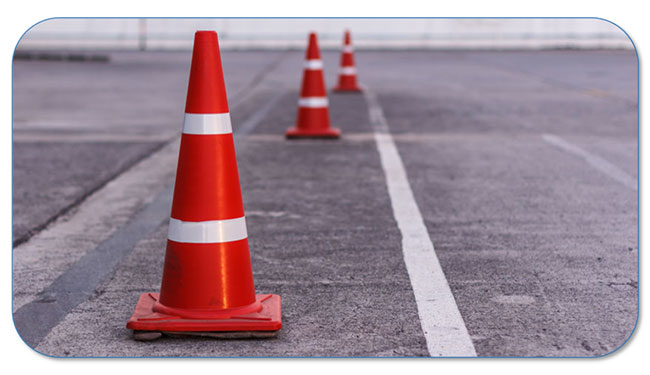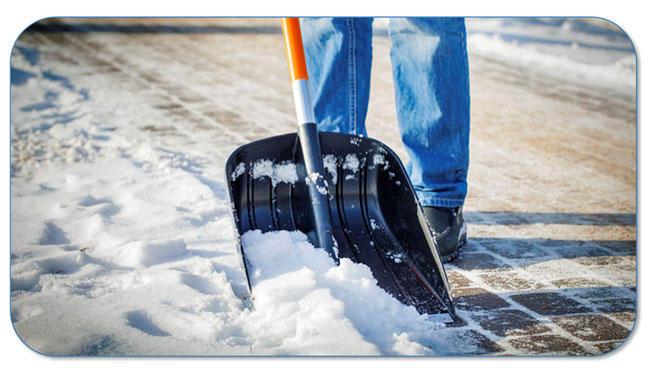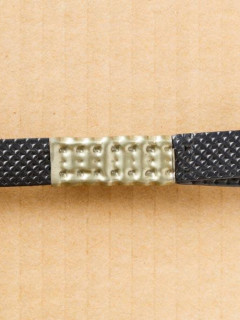Winter is fast approaching! It’s time for Christmas markets, tinsel and walks in the snow. But winter also means the thrill of low temperatures and bad weather. How can you best protect your employees from the cold? And when does it get too cold? With the measures below, you can make work more pleasant – and warmer – for everyone in winter!
These minimum temperatures are determined by law
Low temperatures can make work more difficult.This of course depends on the type of work you do.The conditions are not the same for an employee sitting in an office chair or standing in a warehouse lifting heavy objects.The following minimum temperatures are determined by law in Belgium1:
| Type of work |
Example |
Minimum temperature |
| Very light work | Secretarial work | +18 °C |
| Light work | Manual work sitting at a table | +16 °C |
| Medium-heavy work | Standing work | +14 °C |
| Heavy work | Digging, pushing wheelbarrows, hand sawing | +12 °C |
| Very heavy work | Climbing ladders and stairs | +10 °C |
6 tips to combat the cold in and around your warehouse
These tips will make working in a cold environment much more enjoyable
► 1. (Warm) clothes make the man
[Wearing appropriate clothing is our first tip, and for good reason – there’s a lot to be said for that²
-
Wear several layers instead of one thick one: layer different clothes on top of each other. Nothing is more effective against the cold than layers, plus it gives you much more freedom of movement.
-
Choose natural materials: synthetic fabrics are often colder than natural materials such as cotton and wool. An exception to this rule is ” fleece “, a super soft 100% synthetic material that holds in layers of air and therefore insulates perfectly.
-
Cover all the extremities of your body: your head and hands are the most sensitive to the cold. Think about a hat, ear muffs and gloves. Make sure you always wear clothes that cover your wrists and ankles. This will prevent cold air from getting into the rest of your body.
finally, remember that as an employer, it is best to provide the necessary equipment to dry and/or heat clothes quickly.

► 2. More breaks
Schedule more frequent breaks in a heated room so your employees can get back to their normal temperature. Give your employees even more energy with soup, hot chocolate or coffee. It will always be welcome!
► 3. Keep your doors closed
To maintain the temperature in a warehouse, it’s best to pay attention to the loading dock doors because that’s where a lot of the cold comes from. Close them quickly and/or cover these areas with an airlock. This is a kind of cushion to place around your loading dock that provides thermal protection when a truck needs to be loaded or unloaded. At RAJA, we also apply these measures
► 4. Use suitable work equipment
In a warehouse, many materials are made of metal. In a cold working environment, metal becomes icy, and does not help an employee to warm up, especially on their fingers. Therefore, it is better to use materials with a wooden, silicone or rubber handle.► 5. Stay dry
If you’re already cold, it’s unlikely you’ll jump into the water.Water and dampness increase that cold feeling, and that’s exactly what we want to avoid.In freezing weather, a puddle can quickly turn into an ice rink.So always make sure you wipe up any wet or damp areas.Inside your storage facility, for example, use heavy-duty cleaning paper.
If the puddle doesn’t go away so easily, it’s best to mark off the area with traffic cones or a protective barrier.

► 6. Add a pinch of salt!
The joys of winter are undoubtedly snow and ice. They can lead to dangerous falls in your business. Prevention is simple, however: use de-icing salt³. Two variants exist
- Calcium chloride
- Sodium chloride
le chlorure de calcium est particulièrement efficace à partir de -20 °C. Le chlorure de sodium n’a pas besoin d’une température aussi basse pour être efficace. Vous pouvez utiliser ce sel de déneigement dès +0 °C. Comme il fait rarement -20 °C en Belgique – à l’exception des plus hauts sommets du pays – le chlorure de sodium est le sel de déneigement le plus approprié.
Une règle importante : l’épandage préventif est meilleur et plus économique. Sur une surface déjà gelée et recouverte de neige, vous avez besoin de 2 fois plus de sel que si vous ne l’aviez déjà répandu de manière préventive. Si le mal est déjà fait et qu’il y a une couche de neige sur votre parking, mieux vaut d’abord l’enlever totalement. Seulement ensuite vous pouvez y jeter du sel. Si vous ne le faites pas, vous aurez besoin d’encore plus de sel, ce qui peut être nocif pour votre revêtement.

- Store the tape at a temperature between +18 and +25 °C. For colder storage temperatures, we recommend keeping the adhesive in a heated room 24 hours before use. It is best to apply the tape at a temperature of at least +15 °C.
- Among the PP (polypropylene) tapes, there are variants that are more resistant to low temperatures.
- Temperature-sensitive products are best packed in an insulated box, which keeps the temperature of your products constant for a longer period of time.
- Paper cushioning is more insulating than plastic variants (such as air cushions or bubble wrap)
 Sources:1 www.emploi.belgique.be/defaultTab.aspx?id=608
Sources:1 www.emploi.belgique.be/defaultTab.aspx?id=608 2 www.asap.be/fr/artikel/5-astuces-pour-travailler-dans-le-froid3 www.bernard.fr/Content/Static/conseils/comment-utiliser-le-sel-de-deneigement.cshtml














